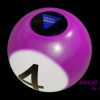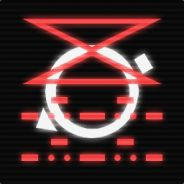
Greetings!
Welcome to Scifi-Meshes.com! Click one of these buttons to join in on the fun.
David_cgc
About
- Username
- David_cgc
- Joined
- Visits
- 528
- Last Active
- Roles
- Member
- Points
- 360
- Posts
- 18
- After Effects
- After Effects
- Lightwave 3D
- Lightwave 3D
- Photoshop
- Photoshop
- Substance Painter
- Substance Painter
- ArtStation
- @davidcgc
- Homepage
- www.gian-cursio.net
- IMDB
- Profile
- Vimeo
- user5879476
- Youtube
- Profile
- Badges
- 7
-
Stargate
Great progress. I have to ask though, have there really been so many rings coming down in the film or the TV-show? I always felt like the pile of rings was barely higher than the people standing in them.
In the TV shows, there were five rings that usually came just above head-height. In the movie, the rings were about half the width, and there were a lot more of them, at least ten, and they extended off the top of the screen every time we saw them. There's a concept art drawing from the movie where the rings fill the entire space between the floor and the hole in the ceiling they drop down from. -
David's Stargate 3D Stuff
Had a bit of a slowdown thanks to computer trouble I could no longer forestall after a few hectic... years... and the release of Myst VR (and some subsequent light data-mining), but now I'm back with a spiffy new machine.
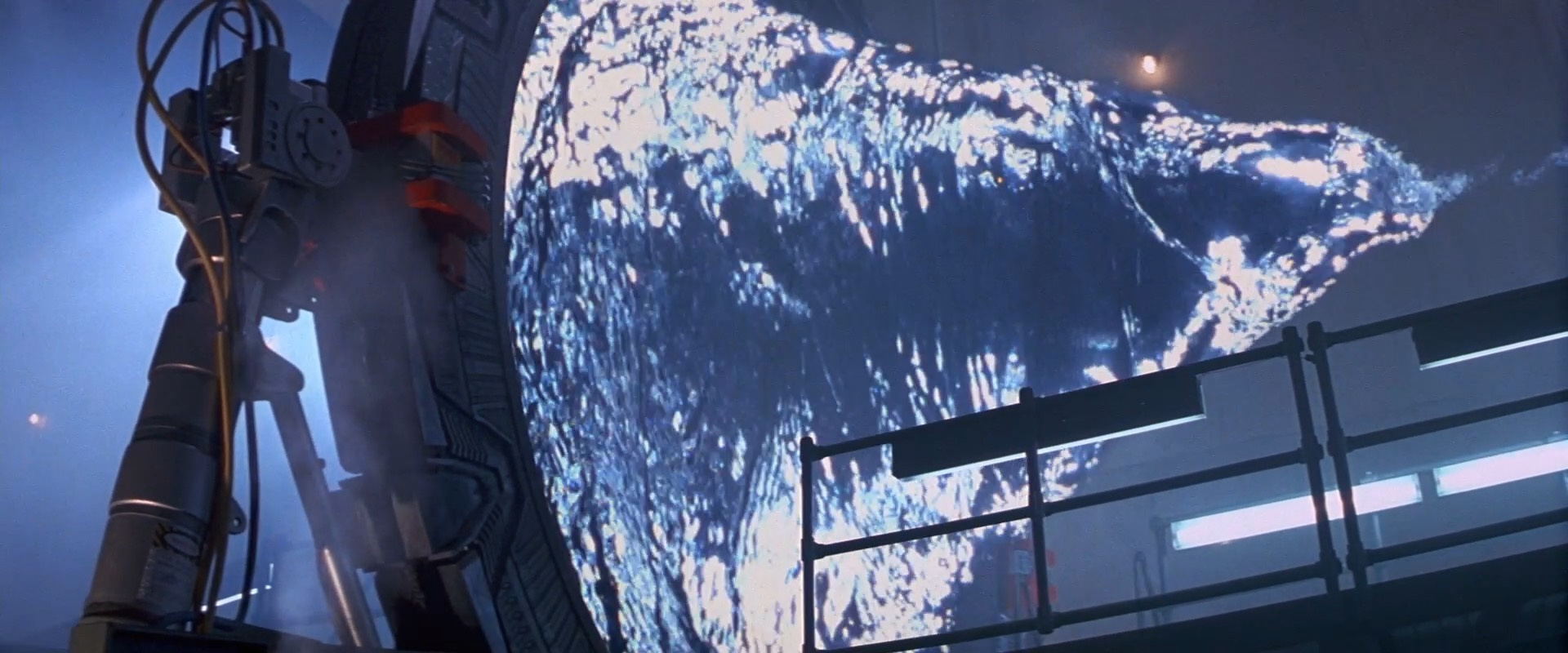
First, for reference, the strudel as it appeared in the movie.
And what I've come up with:
It's extremely straightforward. The surfacing is based on what I did for the front of the puddle, with the light refractions faked with gradient shaders remapping the same procedurals that are driving the bump mapping that's pulling actual scene reflections, though, in the case, I used a Crumple and a couple of Cyclone procedurals. Why two Cyclones? Because they don't animate and I though it was too obvious the swirls weren't moving, and overlaying a second on rotating helped. A bit.
The funnel itself is nothing fancy, just a curvy cone with procedural deformations (and an alpha map so that it doesn't deform where it's touching the stargate. The cavitating bubbles gave me some trouble. I tried a particle emitter, but it wouldn't swirl. I tried some dummy objects with mostly-transparent noise textures, but that didn't work. What I settled on was a trail of single-point polygons, with the pixel-size set to a negative so they'd render as tiny spheres instead of points. They were textured with a transparency and a bit of a glow starting at the tail of the vortex then quickly fading down, with a series of procedural clip maps that helps give them the illusion of motion as they pop in and out. I might want to add some more points to get it a little fuzzier, but I feel like the better solution is to just let film grain and bloom settle them in on the real renders.
So, to the kawoosh. I have three ideas for how to do it.
The classic way would be a series of morph targets. I think if I arrange my edge loops right and have enough intermediary morphs, I can get something that gets a little bit of the billowing of the actual effect. I'm not sure how it'll look (at best, probably a lot like this), but the benefit is that I know exactly how to do it on a technical level.
The second idea was to use dynamics. Have a disc object, and use a proxy sphere to punch it outward like a sheet of rubber. I've used Bullet before, but just for colliding objects, not for deformations like that. I did a quick mess-around, but I have not figured out how to make my disc stretchy yet.
The third idea is to use fluids. At first I thought this was doomed to failure; the tricky part about the kawoosh is that it's a negative space, it's not water exploding outward, it's air pushing out water and then the water returning to level. I was thinking that all I would end up would be basically a mold for a kawoosh, all the space around it that isn't part of the shape I want. But I've realized, air is also a fluid, so I would think it should be possible to have my simulated water tank, hit it with a blast of simulated air, and then save and render the solve for the air being blasted into the water and pushed back out. I did walk through LWGuru's video, but it'll take a lot more practice before I really have a sense for this. And my first attempts at running the fluid simulations was painfully slow, even at a lower resolution on my new computer, so I'll need to figure that out, too. -
David's Stargate 3D Stuff
I continued tweaking the puddle until I was satisfied (and then tweaked it again after it occurred to me that to clip out all the scenes of the effect in the movie so I could see what it was doing for more than a second at a time, at which I realized that it was an overlay of two sets ripples, one expanding outward and and the other retracting inward). Since I've had no joy on getting caustics to do anything in 2020, I exported the puddle object as a LWO2 and loaded it into 2015, where I'm rendering a loop of the caustic lighting, which I'll apply as a projection map to a spotlight. There are pros and cons (pro, the lighting actually looks like real water, con, it won't respond if the ripple pattern changes, neutral, the original didn't respond either, because it was just light reflected off of crinkling mylar), but I'm ready to declare victory unless someone cracks the case of how to make a swimming-pool floor effect in LW2020 (it's the example they use to explain what caustics are in the manual, for crying out loud!).
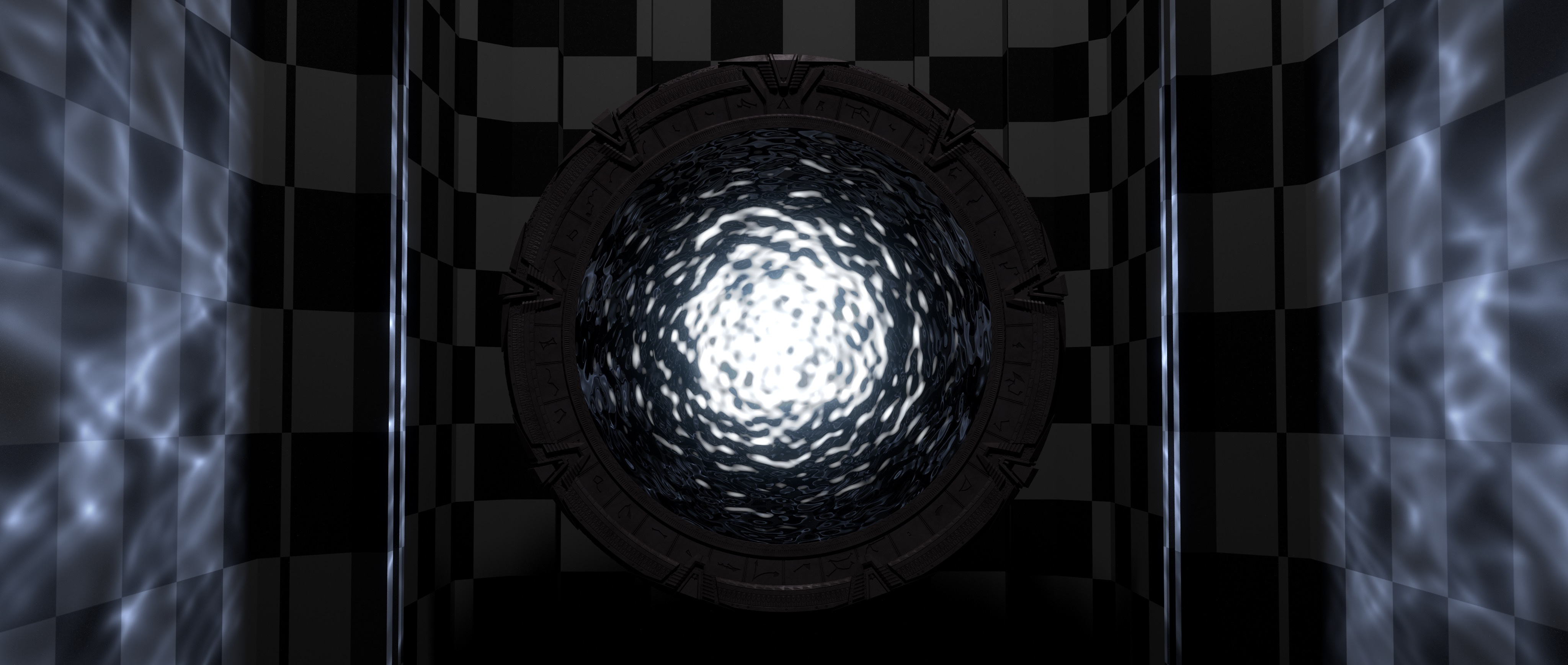
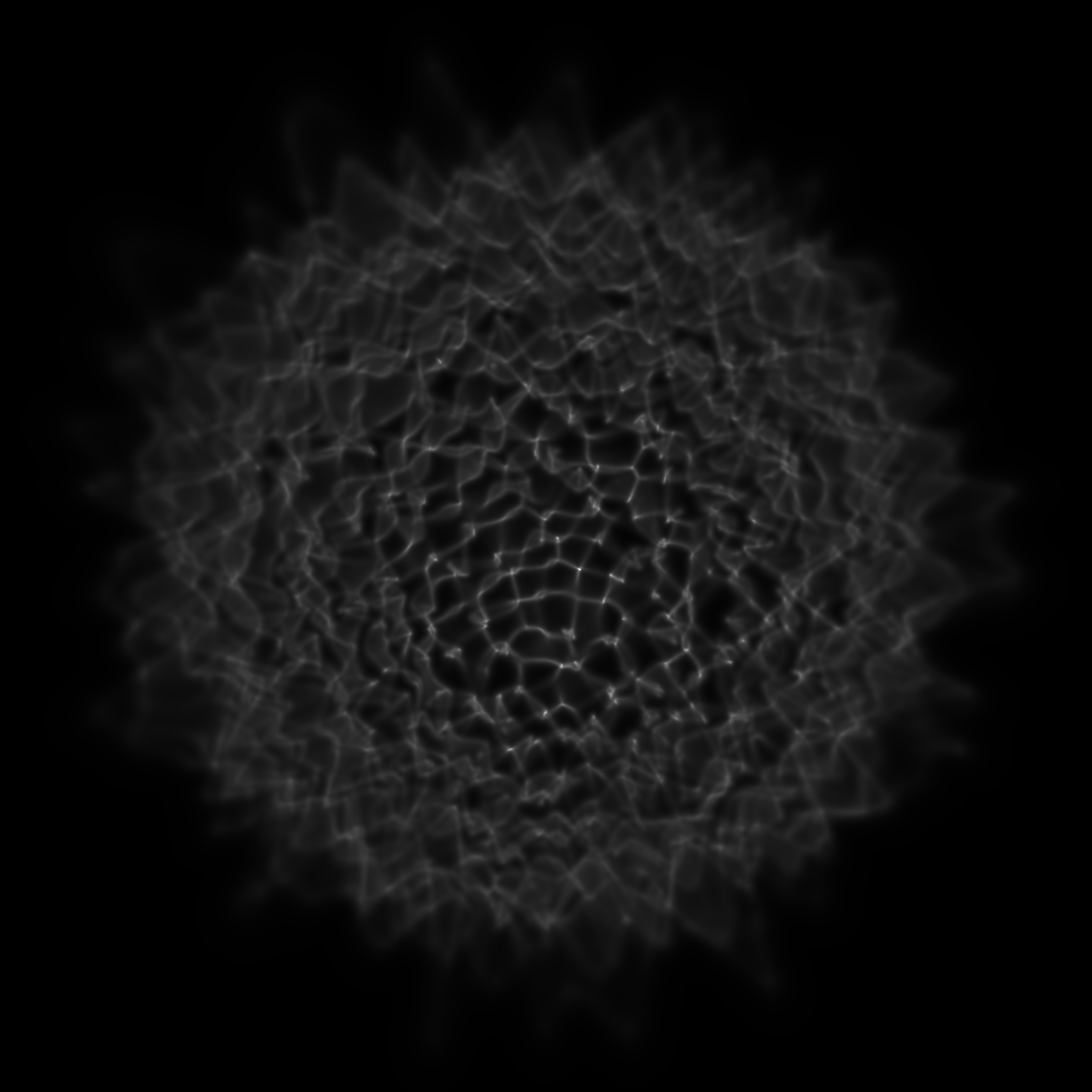
Next up is the strudel extending out the back, the forming/dissipating effect of the puddle (the movie version is just a slightly fancy radial dissolve), and then I start playing with fluids, dynamics, cloth, volumetric, morphs, and whatever else it takes to get a decent kawoosh. -
David's Stargate 3D Stuff
After finishing my new Stargate model, I've started working on matching effects to go with them. Ideally, I'd like to have a full suite of effects for both the movie and TV versions, but at the very least, I'd like to match what I did in my last version in the 2000s and have a decent in-camera "puddle" effect.
I decided to start with the movie version. First, an example from the film. There were several shots of the puddle effect, but they were all pretty much from these two angles.
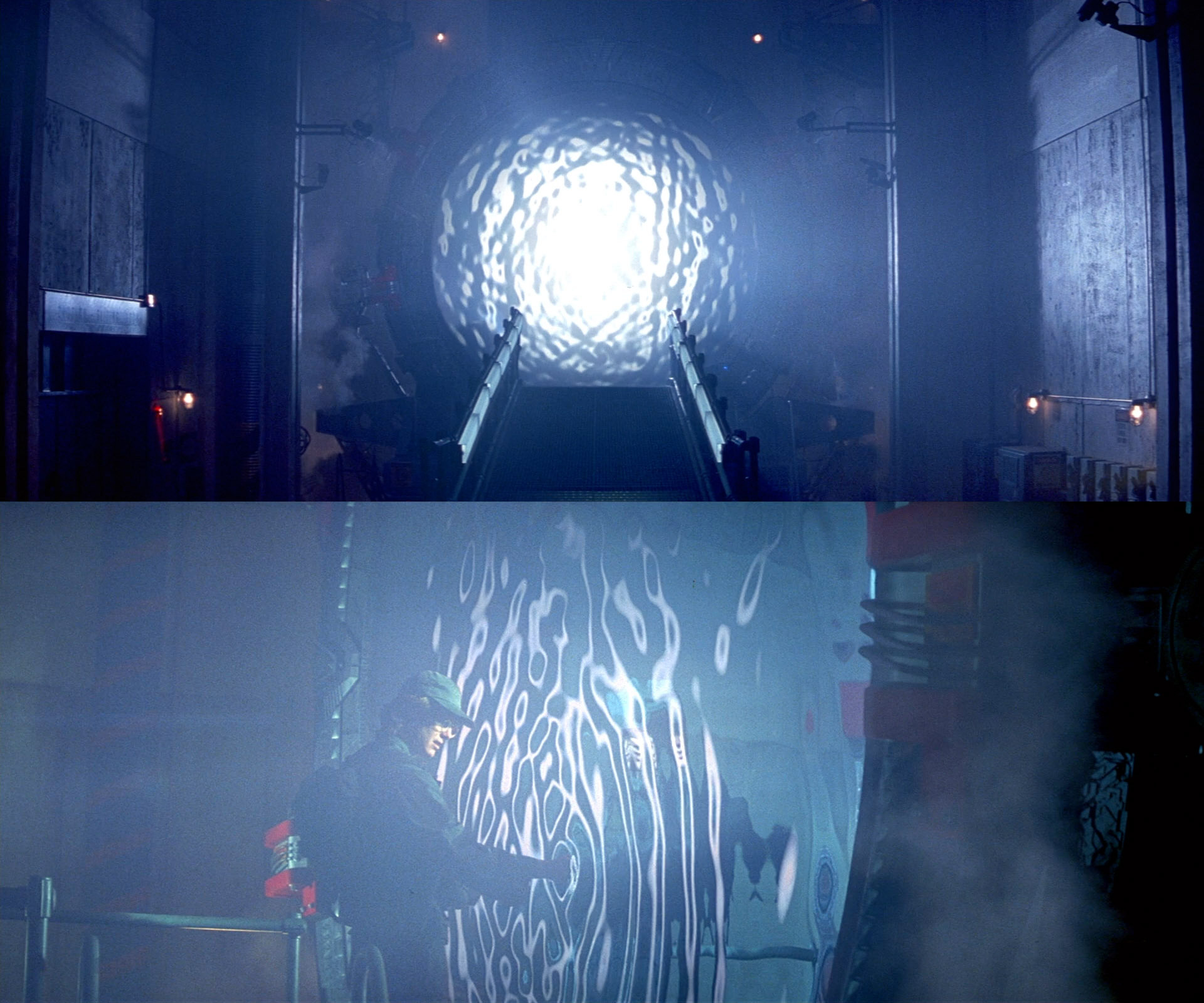
The general effect seems to be a liquid mirror, combined with light shining through water. My first instinct was to try and do exactly that, using a spotlight and transparency, but I ran into a number of problems; in the PBR world, you can't have mirrored reflections without metalness, you can't have light refract through something without transparency, and you can't have metalness and transparency at the same time. So, then I tried for just getting the caustics being projected out from the puddle on to the surrounding set. More on that later, but suffice it to say, it also didn't work.
The next step was something I attempted on my prior 2000s model before coming up with a more universal solution, a spotlight pointed directly at the front of the puddle. This was a bit better, but from the side view, I noticed the highlights were exactly where they weren't in the reference image. Amazingly, stuff shining through water and stuff being reflected off water happens in exactly opposite parts of the ripples.
So then I decided to start cheating. And it worked! I used a Gradient node to define a certain section of slope from the ripple texture as bright white. The next issue was that the settings I was using for the side angle didn't work for the front, and vice-versa, but I was able to use Incidence nodes, clamps, and remaps to have the specific slope defined by the gradient shift depending on the angle of the camera. Then it was all just down to the fine-tuning.
I ran off a couple of test renders from both angles. One in a blank gray cube, one in an environment from HDRlabs. The trick is, both stargates in the movie are in very dark rooms, and that was the darkest interior HDR environment I have. I also used the Master Chief model from Halo 3 for scale and to give the puddle a human-shaped thing to reflect, since I don't have a James Spader model handy.
Looking at it, the first thing I'm going to fix is to ramp down the strength of the bump map towards the edges. Luckily, since that's entirely separate from my fake highlight effect, I can dial it down to get the reflections to look more accurate to the movie without damaging the main part of the effect, the highlights.
The puddle here is flat white, while in the movie, it has a bit of a blue cast. I'm pretty sure that's just grading and the color of the lighting in the rooms the 'gate is in, and it's supposed to be a neutral mirror. On the other hand, the on-set interactive lighting definitely seems to be blue, so maybe I'll give it just a tinge so it isn't perfectly neutral gray.
Then there are the bigger issues. The thing that bothers me the most is that, with the way Lightwave's Ripples procedural works, and the speed of the ripples in the movie, the pattern repeats three times a second. I'd like to introduce more randomness into it. I'm not sure if there's another procedural I could be using, either built-in or a plug-in (maybe I should try one of these, I never got around to loading them in to LW2020) or if I should just layer in some more procedurals to break it up.
I'd also like to be able to get the interactive ripples when something passes through the puddle automatically, but I have no idea how to make that happen. Ideally, it'd respond to actual geometry, but another idea I had is for a texture that generates ripples of a given size and speed when properly-named nulls are close to the surface of the object. If worse comes to worse, I can just cheat it, pre-making some kind of splash-map in After Effects or something and layering it in to the texture, but it feels so gross to have to save a different version of an object every time I use it in a shot.
Once I get those resolved, or become tired of trying, the next thing should probably be the interactive lighting being projected out from the stargate. On set, this was simply a spotlight being reflected off shaking mylar. I'd like to do something a little more elaborate. On my old Stargate model, I actually had a great success using a dummy object, a spotlight, and caustics.
Unfortunately, that broke with a subsequent Lightwave update. The effect stopped animating properly, instead of that lovely multilayered swirl, it just sort of flickered inward, like the animation had been set too fast and it was doing every cycle in less than a frame. Like video of a helicopter.
Anyway, my goal is to match that effect. I got exactly nowhere in my first tests, with the spotlight shining through seeming to be totally unaffected by my rippling puddle object. I made a separate scene to play with after reading over this thread, an inside-out cube with the top face set as my test "water" texture, trying to dumb things down to the bare minimum to achieve the sunlight-in-a-swimming-pool effect. Didn't have much success either, though I got something recognizably caustic-y on the walls of the "pool" that were closest to the surface of the water. Something interesting I did note was that I was having trouble seeing the practical difference between the light refracting through the transparent polygon with the basic renderer versus when caustics were active under the GI tab. Each seemed to be trying to give the same effect in different ways. -
David's Stargate 3D Stuff

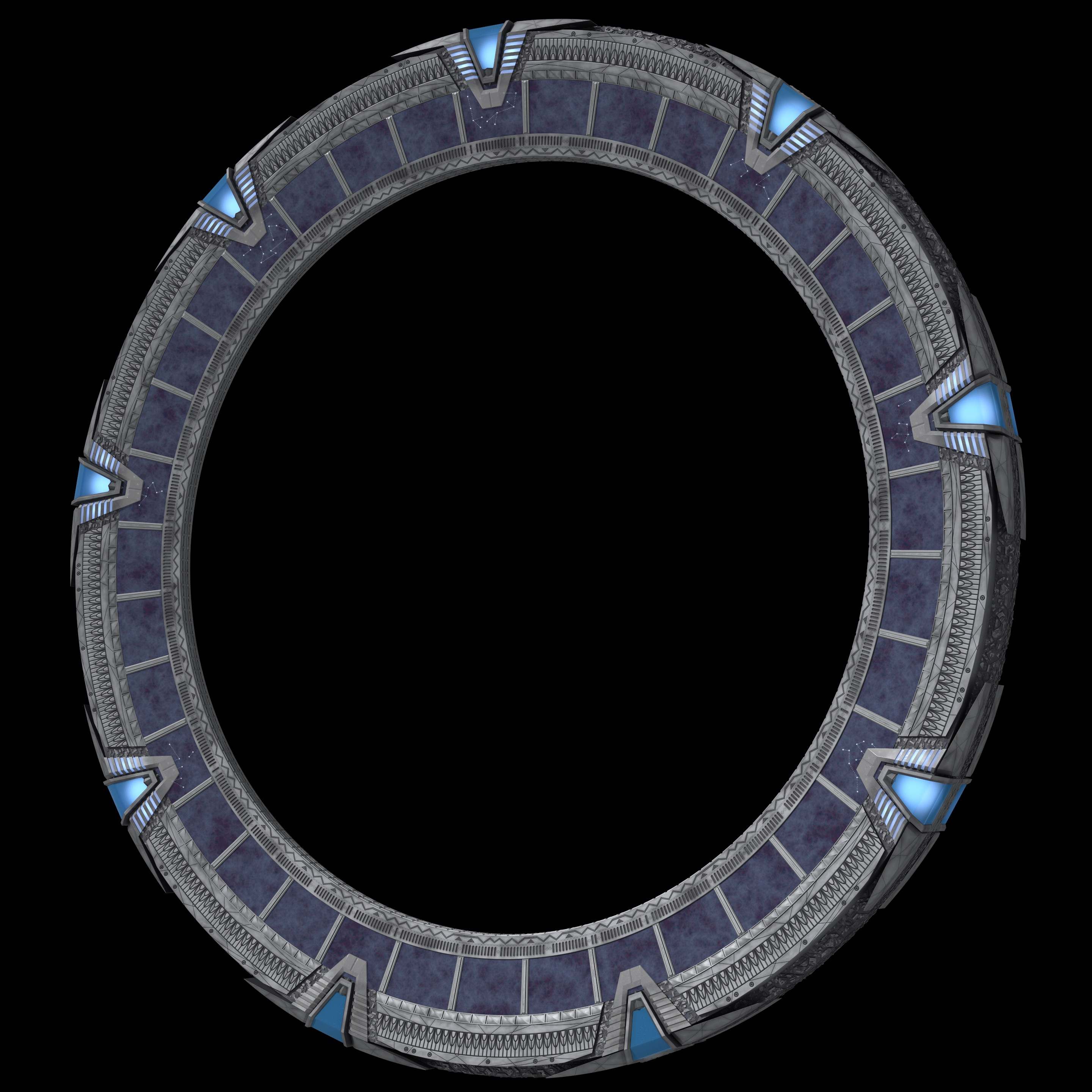
I haven't quite finished all my lighting and animation demo renders yet, but I couldn't wait any longer to get this out into the world. The Pegasus Stargate is now up for download on my website, in Lightwave, FBX, and OBJ formats.
My computers will be tied up doing the rest of the rendering for a little bit, but once I get the chance, I'll be diving in (so to speak) with the puddle effect. I'm looking forward to using some of the features that didn't exist in Lightwave last time I tried to make it.
Additional credits
- Icons from Font-Awesome
- Additional icons by Mickael Bonfill
- Banner background from Toptal Subtle Patterns
© Scifi-Meshes.com 2001-2024

